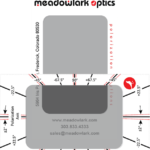Volumetric Imaging Application Note
Volumetric Imaging Application Note Overview: In order to understand biological functions at a system level it is necessary to imageinterconnectivity of processes in real time. This is particularly relevant in neuroscience, where the BRAIN initiative is funding research to understand how the brain functions, and how that function is altered by disease. This requires imaging […]
Volumetric Imaging Application Note Read More »

